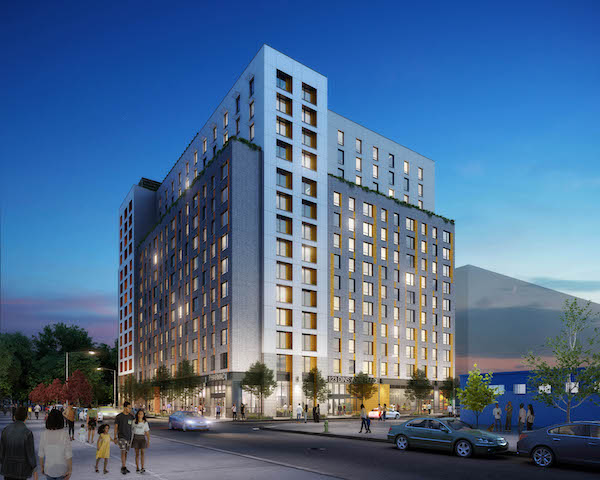Firms Open Up About Pandemic-Induced Layoffs, Furloughs, and Pay Cuts

Gensler's office in Oakland, California, photo © Jasper Sanidad Photography
With global stay-at-home orders and construction halts during the COVID-19 crisis, architecture firms large and small have been enacting a sweeping suite of cost-saving measures to shore up their businesses. While some firms have received short-term loans from the federal Paycheck Protection Program (PPP), the seemingly inequitable distribution has left other practices scrambling.
“I have been in touch with probably 120 firms—ranging geographically from coast to coast—who are anticipating a downturn as clients are putting projects on indefinite hold,” says Hugh Hochberg, a principal of the Coxe Group, a design consultancy.
As a result, at firms including Gensler, Grimshaw Architects, Skidmore, Owings & Merrill (SOM) and many others, pay cuts, layoffs, and furloughs, or some combination of all three, have become painfully common.
SOM’s partners cut expenses in all areas and compensation for leadership. The firm also temporarily reduced all staff salaries by 10 percent and placed a number of employees on furlough. “Of all the scenarios we examined, this model enabled us to continue providing uninterrupted benefits and cover the full cost of health insurance, including the employee portion, to all our furloughed colleagues during this difficult time,” said the partners in an email. “We did not take this decision lightly.”
At Robert A.M. Stern Architects, as some projects went on hold, especially those in the construction phase, the firm had to reduce design staff and reduced salaries firm-wide. “In addition, many among our support staff simply cannot work remotely: our facilities department, model shop, and library/archive services group, for example,” says CEO Lisa Matkovic. “As we modeled different scenarios, we aimed to mitigate the impact as much as possible.”

Dattner Architects, too, acted swiftly with salary reductions and some layoffs and furloughs to prepare for a “challenging road ahead,” says Managing Partner Kirsten Sibilia. “Like most architectural firms, payroll is our largest single expense most months, so the PPP program is helping us navigate through the short term.” The variety and range of Dattner’s projects, in both size and typology, helped the firm weather the 2008 recession, and “again, we are seeing that our focus on social infrastructure and civic architecture—the building blocks of our cities—is literally essential,” says Sibilia.
For other firms, PPP funds have allowed them to retain staff—for now. According to Frederick Bland, a managing partner at Beyer Blinder Belle (BBB), “only 15 percent of architecture firms have money in the bank from the PPP program, and we are among them. It was a great sigh of relief.” BBB has 175 people in its New York, Washington, D.C., and Boston offices. “Where we’re going to be when that program runs out in eight weeks is a bit of a crapshoot,” says Bland.
BBB has about a dozen projects on hold in New York, but Bland expects them to resume when it is legal to do so. Clients who are “smaller, less well-funded developers” are questioning the viability of their projects, but Bland declined to specify further. Meanwhile, master planning and architectural projects for universities and private schools are going forward. “They view our work for them as essential and it’s not stopping,” he says.
The San Francisco-based firm David Baker Architects (DBA) also received a PPP loan. “It has eased our concerns. We see it less as immediate help and more as a buffer against what we expect to be a slowdown over the next six to nine months,” says DBA principal Daniel Simons. The firm had hired a few employees just before California’s shelter-in-place order and considered rescinding offers, but ultimately didn’t have to. While DBA’s hospitality work went on hold, most of the studio’s portfolio is mixed use with housing—projects that are moving forward. “We also do quite a bit of affordable housing, which is less subject to market fluctuations,” says Simons.
Architect Michael Chen’s New York City firm MKCA did not see its PPP loan approved, and Chen has forgone his own salary to keep his six staff employed. He has a weekly call with a number of principals at other small firms and says that many of their PPP loans were not approved. “To be honest, the narrative seems to be that a lot of bigger businesses were served first,” says Chen. “The neo-liberal project of the government having … banks administer the loans as they see fit [means it] comes as no surprise that the funds were not administered equitably.”
Chen says he is “blessedly busy” at the moment, but “it’s the work that replaces this work that I’m worried about.” He and a group of other independent design firms quickly organized Design Advocates, a platform for sharing resources to cope with COVID-19. “We're trying to … talk about how important it is for architects and designers to be at the table when thinking through the transition to whatever comes next, ” says Chen. “Any business, workplace, institution, public space—what have you—that reopens in the next year or two is going to need financial assistance and design assistance, since literally all of the rules and protocols of personal and interior space have changed.” He adds: “This is something designers have skills to do: Hire us to help develop tools and systems to think through the problem.”
Collaboration is at the heart of the practice of architecture, and while that no longer looks the same, with designers working from home and brainstorming on video calls, many are discovering some benefits. “I think we really see how working remotely could change the way we work in the future,” says DBA’s Simons. “It could allow us to give more flexibility to employees to let them have more time with their families. We especially see this as a way to retain many of the great women in the profession who historically have not stayed in traditional architectural practice.”




